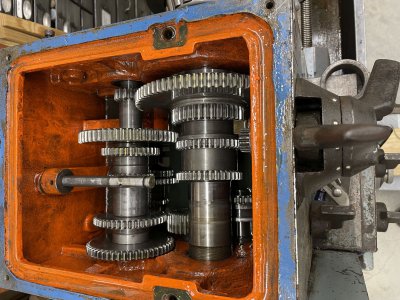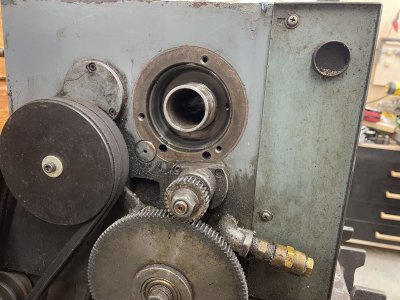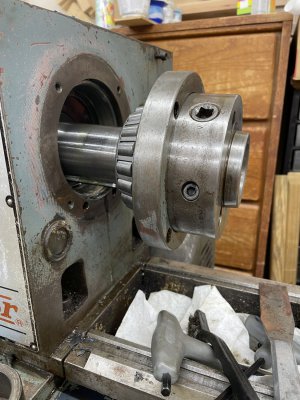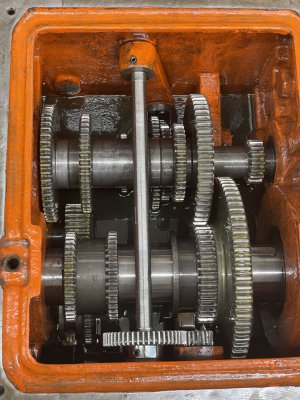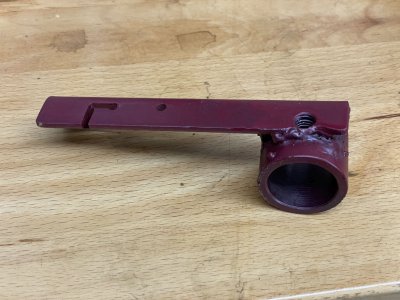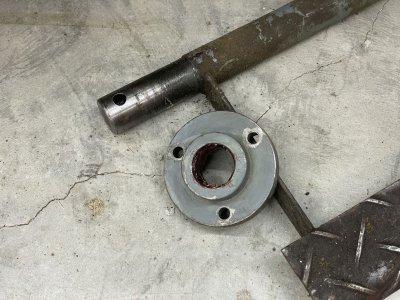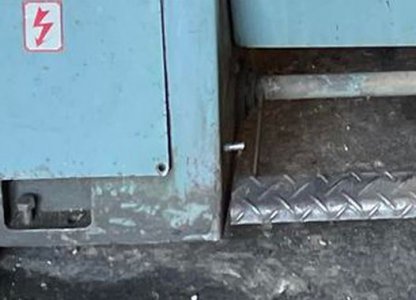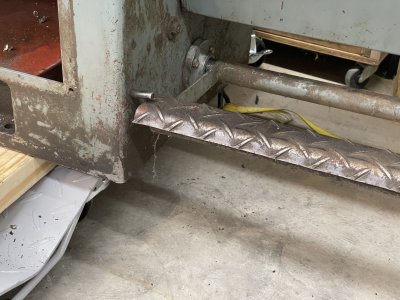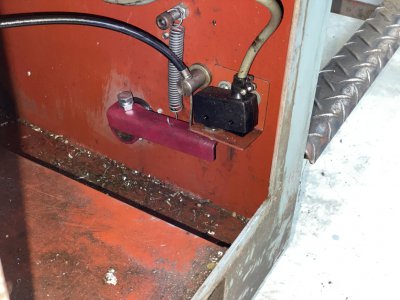This discussion started in the brand specific area before I found the lathe. It continued in the "All About Electrical Issues" and now to this more general interest area.
One of the early discoveries was that the lathe absolutely puked oil from the chuck end of the headstock at the spindle. I found a Woods Creek Workshop video of his Jet 13x40 headstock overhaul about 3 years ago that was very helpful in knowing what to expect in the way of partially removing the spindle and how the oiling worked. The Jet is not identical to my Victor but it's close enough that there were no surprises. The oiling "system," if it can be called a system, was the same; sling and drip.
Before opening up anything I removed the chuck. Clearly this lathe was owned or operated by a gorilla, both strength wise and mentally. I had to use a 1/2" drive 20" breaker bar and a socket to break the QCTP nut loose and a shorter 3/8" breaker bar to break the camlocks free. Once the chuck was off of the spindle I checked the runout inside the MT5 taper. Finally, there was good news. The runout barely moved the needle on the DTI. It was no more than .0002".
After taking the top off of the headstock I found a significantly overfilled reservoir with the oil going well above the top of the sight glass. The high oil level was no surprise since the sight glass was cloudy almost to the point of opaque. The gasket behind the bearing cap was also leaking. The former operator still had surprises in store for me. When I went to remove the locking nuts from the left end of the spindle they weren't there. I hadn't even noticed until that moment. The tension of the bearing around the spindle was all that was holding it in place. Then I noticed that there was no screw and washer in the middle of the pulley for the belts from the motor. Fortunately, the screw is a hardware store item and the bearing locking nuts were available with overnight delivery from Amazon.
I scraped the paper and blue silicone sealer off of the surfaces and cleaned them first with mineral spirits and then acetone in preparation for some Permatex Gasket Maker. The rollers in the bearings are no longer shiny and the races are showing some dulling of their shine as well but with the minimal runout I'll wait a while before replacing them.
One of the early discoveries was that the lathe absolutely puked oil from the chuck end of the headstock at the spindle. I found a Woods Creek Workshop video of his Jet 13x40 headstock overhaul about 3 years ago that was very helpful in knowing what to expect in the way of partially removing the spindle and how the oiling worked. The Jet is not identical to my Victor but it's close enough that there were no surprises. The oiling "system," if it can be called a system, was the same; sling and drip.
Before opening up anything I removed the chuck. Clearly this lathe was owned or operated by a gorilla, both strength wise and mentally. I had to use a 1/2" drive 20" breaker bar and a socket to break the QCTP nut loose and a shorter 3/8" breaker bar to break the camlocks free. Once the chuck was off of the spindle I checked the runout inside the MT5 taper. Finally, there was good news. The runout barely moved the needle on the DTI. It was no more than .0002".
After taking the top off of the headstock I found a significantly overfilled reservoir with the oil going well above the top of the sight glass. The high oil level was no surprise since the sight glass was cloudy almost to the point of opaque. The gasket behind the bearing cap was also leaking. The former operator still had surprises in store for me. When I went to remove the locking nuts from the left end of the spindle they weren't there. I hadn't even noticed until that moment. The tension of the bearing around the spindle was all that was holding it in place. Then I noticed that there was no screw and washer in the middle of the pulley for the belts from the motor. Fortunately, the screw is a hardware store item and the bearing locking nuts were available with overnight delivery from Amazon.
I scraped the paper and blue silicone sealer off of the surfaces and cleaned them first with mineral spirits and then acetone in preparation for some Permatex Gasket Maker. The rollers in the bearings are no longer shiny and the races are showing some dulling of their shine as well but with the minimal runout I'll wait a while before replacing them.


